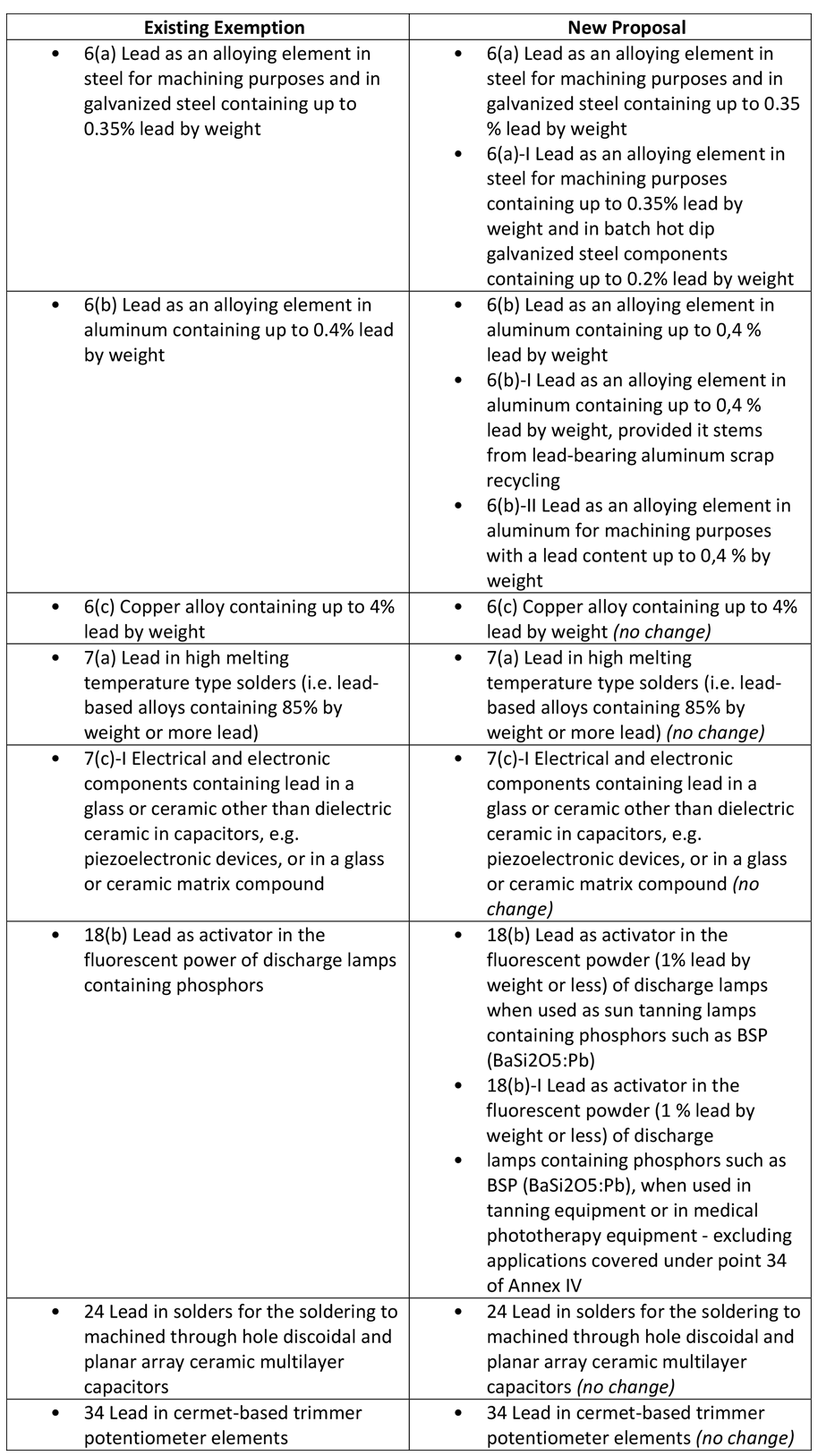source: TTI Market Eye article
Mike Kirschner provide an update on US Flame Retardant User Guide, EU ROHS Directive Draft and UAE RoHS.
New US Consumer Product Safety Commission Flame Retardant User Guideline
On September 28 the Consumer Products Safety Commission issued a guideline calling for manufacturers of electronic products (among others) to stop using additive (“non-polymeric”) organohalogen flame retardants in the enclosures and casings. At issue is the fact that these toxic substances demonstrably migrate from plastics and are detectable in household dust, which leads to exposure to humans and the environment.
These substances, primarily brominated flame retardants (but chlorinated flame retardants are also included in scope), should be replaced with either
- polymeric (“reactive”) flame retardants
- non-halogenated flame retardants, such as phosphorus-based (which, as I understand it, requires a change in tooling since the resins are incompatible)
- metal fire enclosures or other non-flammable technologies
- product redesign to eliminate the need for flame retardants in plastic enclosures
- removal of the flame retardants in the cases where it is unnecessary
Review UL 62368-1 Clause 6, Electrically-Caused Fire, to assess.
Note that replacement with other flame retardants may not be a good long-term solution. Phosphorus-based flame retardants have their own set of toxicity issues and, as we learn more, these may become a target for restriction and replacement as well. Polymeric brominated flame retardants, while solving the migration issue, still have the same challenges with end-of-life recyclability and generation of toxic dioxins and furans during the sort of low-temperature incomplete combustion that occurs in illegal recycling activities in China, Africa, India and other places around the world.
Long term, the goal should be to design products without the need for flame-retarded plastics in enclosures (or anywhere, for that matter, but that’s what we get for using fossil-fuel-based materials in high-energy-density applications. To me, moving away from flammable polymerics is one of the Electronics Industry’s true Grand Challenges).
EU RoHS Delegated Directive Drafts
On September 19 the European Commission opened up a stakeholder consultation period on 8 RoHS Exemption Renewal applications. These were part of the Oko-Institut’s “Pack 9”; there are still quite a few that are unresolved so expect action from the Commission to draft “Delegated” Directives to address those as well over the next few weeks and months. The exemptions address are listed in the table below along with the proposed replacement wording:

Proposed expiration dates are listed in the individual Commission Delegated Directive Annexes. The consultation closes on October 17, 2017.
United Arab Emirates (UAE) RoHS Redux
We now have a little more information on UAE RoHS, though it is still confusing and somewhat problematic. Please read my recent article on LinkedIn for more information.
Since that article was written the agency in charge of implementation, Emirates Authority for Standardization and Metrology (ESMA), issued a short “Implementation Guideline” that covers some information that is already clear (i.e. product scope, restricted substances), but also makes further clarifications. For instance,
- The list of applicable standards has been updated and corrected
- Implementation timeline is outlined clearly in a table
- The format of the Declaration of Compliance is defined
However, they appear to have now changed the applicable Conformity Assessment requirements. It was “Form A”, which is similar to “Module A” in the EU 768/2008 Decision applicable to EU RoHS. But now there are two options (neither of which appear to be “Form A”!):
- Option 1:
- Risk assessment to be submitted in case the full product assessment for RoHS is not completed.
- Applicant submits a full RoHS test report of the complete product (if available). Otherwise three (3) test reports of the critical component to be submitted.
- How one determines what is “critical” is unclear. And why three test reports?
- ESMA will verify compliance and issue the certificate
- Only valid for 1 year; annual renewal is required
- Option 2 (Form H/Module H):
- Similar to EU risk-based requirements, the Applicant submits risk assessment documents based on IEC 63000 (the approved international standard equivalent to EN 50581:2012, the EU’s RoHS risk assessment harmonized standard for RoHS) and IEC 62476:2010, “Guidance for evaluation of product with respect to substance-use restrictions in electrical and electronic products”, a standard I believe few are familiar with.
- Notified Bodies (those who certify products to meet EMC and Safety requirements) will do the assessment and certification
- Must place Emirates Quality Mark on product
- Valid for 3 years
“Notified Bodies” certify against standards and regulatory requirements based on defined and agreed certification protocols. There are no such protocols for IEC 63000 or EN 50581. These bodies, in my experience, are not expert in RoHS. Stay tuned.


































